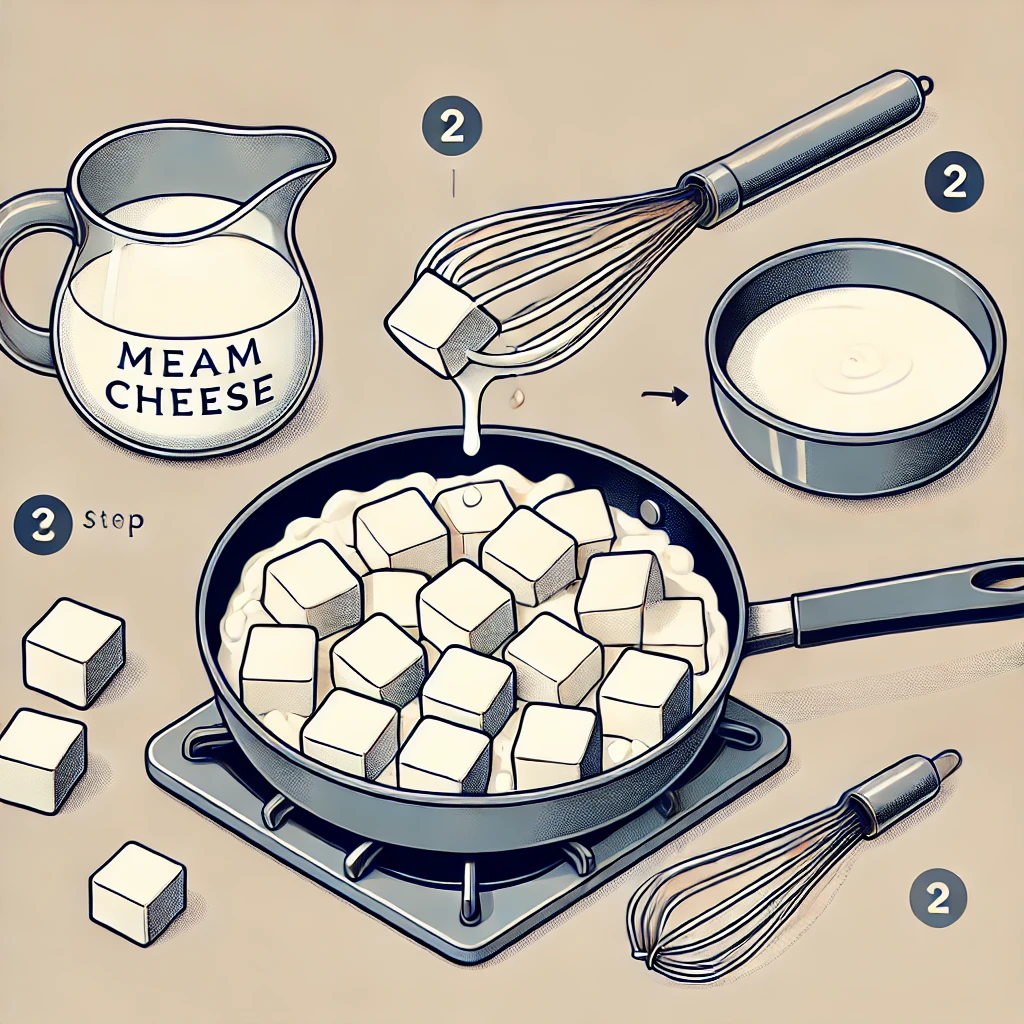Cream cheese is a staple in many recipes, known for its rich, creamy texture that adds depth to both sweet and savoury dishes. However, melting cream cheese on the stovetop can be tricky if you’re unfamiliar with the proper techniques. This article will walk you through the best practices for melting cream cheese on the stovetop and provide tips for avoiding common pitfalls.
Understanding Cream Cheese
Composition of Cream Cheese
Cream cheese is made primarily from milk and cream, often with stabilizers like xanthan gum to maintain its smooth texture. The high fat content makes it wonderfully creamy; however, it also means that it’s prone to separating if not melted correctly. Thus, understanding how to melt cream cheese on the stovetop requires a careful approach, as the fat can easily separate when exposed to too much heat.
Why Melting Cream Cheese Can Be Tricky
When heated, cream cheese can easily clump or curdle if you’re not careful. This happens because the fat in the cream cheese can separate from the other ingredients when exposed to high heat. Therefore, if you want to know how to melt cream cheese on the stovetop effectively, following specific steps is essential to ensure a smooth, creamy result.
To dive deeper into the easiest ways to melt cream cheese, you might want to check out this helpful guide on alternative methods for softening cream cheese.
Melting Cream Cheese on the Stovetop

Step-by-Step Guide
Tools and Ingredients Required
To melt cream cheese on the stovetop, you’ll need:
- A medium-sized saucepan
- A whisk or spatula
- Cream cheese (preferably full-fat for better melting)
- Additional liquids like milk or butter to help achieve a smooth texture
Method
- Prepare the Ingredients: Cut the cream cheese into small cubes to help it melt evenly.
- Heat the Saucepan: Then, place your saucepan on the stovetop over low heat. Add a small amount of milk or butter to the pan.
- Add the Cream Cheese: Slowly add the cream cheese cubes to the saucepan, stirring continuously with a whisk.
- Stir Consistently: As the cream cheese melts, continue stirring to prevent lumps and ensure a smooth consistency.
- Adjust the Consistency: If the mixture is too thick, gradually add more milk or butter until you reach the desired texture.
It’s crucial to avoid overheating the cream cheese, as this can cause it to separate or curdle. Furthermore, you can visit the Food Safety Standards website for more information on safely handling dairy products.
Alternative Methods for Melting Cream Cheese
If you prefer not to use the stovetop, there are several alternative methods available:
Microwave Method
- Instructions: Place the cream cheese in a microwave-safe bowl and heat it on low power in 15-second intervals, stirring in between.
- Pros: This method is quick and convenient.
- Cons: However, there’s a higher risk of overheating and uneven melting.
Oven Method
- Instructions: Preheat your oven to 300°F. Place the cream cheese in an oven-safe dish, cover with foil, and bake for 10-15 minutes, stirring occasionally.
- Best Uses: This method is ideal for baking recipes like cheesecakes.
Double Boiler Method
- Instructions: Set up a double boiler by placing a heatproof bowl over a pot of simmering water. Add the cream cheese to the bowl and stir until melted.
- Advantages: The gentle heat provided by this method significantly reduces the risk of curdling.
For a more detailed look at alternative methods, you can explore this comprehensive guide on the best practices for melting dairy products.
Troubleshooting Common Issues
Why is My Cream Cheese Not Melting Properly?
If your cream cheese isn’t melting smoothly, consider these factors:
- Heat Too High: First, lower the heat to prevent clumping.
- Not Enough Liquid: Adding more milk or butter can help achieve a smoother consistency.
Fixing Lumpy Cream Cheese
If your cream cheese becomes lumpy, you can try the following:
- Whisk Vigorously: A whisk can help break down lumps effectively.
- Add More Liquid: Alternatively, gradually incorporate milk or cream while whisking.
Enhancing the Flavor After Melting
You can enhance the flavour of melted cream cheese by adding the following:
- Garlic for a savoury taste
- Herbs like parsley or dill
- Spices such as paprika or black pepper
Recipes Using Melted Cream Cheese
Here are a few easy recipes that use melted cream cheese:
Cream Cheese Sauce for Pasta
- Ingredients: Melted cream cheese, milk, parmesan cheese, garlic, and herbs.
- Instructions: Combine all ingredients in a saucepan over low heat. Stir until smooth and creamy, then serve over your favourite pasta.
Cream Cheese Frosting
- Ingredients: Melted cream cheese, powdered sugar, and vanilla extract.
- Instructions: Whisk the ingredients together until smooth and fluffy. This frosting is perfect for cupcakes and cakes.
Cheesecake Base
- Ingredients: Melted cream cheese, sugar, eggs, and vanilla.
- Instructions: Blend all ingredients until smooth, pour over a graham cracker crust and bake.
Melting cream cheese on the stovetop may seem daunting initially, but with the proper technique, it’s pretty simple. Following these methods, you can avoid common pitfalls and create a smooth, creamy texture that is perfect for various recipes. Whether you’re making a sauce, frosting, or a cheesecake base, mastering the art of melting cream cheese will undoubtedly enhance your culinary skills.
Finally, for more tips and tricks on using cream cheese in your cooking, you can explore how to keep cream cheese from curdling in recipes on Samuel’s Recipes.
